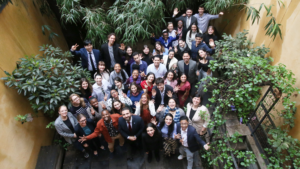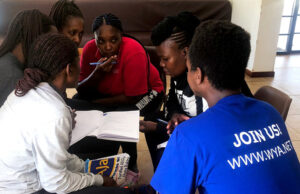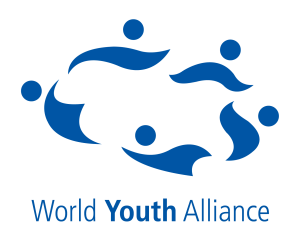 People are on the move every day for various reasons, but some moves are larger and far more filled with risk and danger. Such is case with migration into a new nation for the sake of opportunity and a chance to live. Even more filled with dangers and risks is the move of youth migrants across borders and seas to enter the labor force in hopes of success. As international migration continues to rise in in contemporary global issues and the international agenda, it is important to assess needs of what the UNDESA (United Nations Department of Economic and Social Affairs) estimated as 27 million migrant youths (ages 15-24 years old). In his message for the observance of the International Day of the Youth this year (themed Youth Migration and Development), Secretary-General Ban Ki-moon wrote,
People are on the move every day for various reasons, but some moves are larger and far more filled with risk and danger. Such is case with migration into a new nation for the sake of opportunity and a chance to live. Even more filled with dangers and risks is the move of youth migrants across borders and seas to enter the labor force in hopes of success. As international migration continues to rise in in contemporary global issues and the international agenda, it is important to assess needs of what the UNDESA (United Nations Department of Economic and Social Affairs) estimated as 27 million migrant youths (ages 15-24 years old). In his message for the observance of the International Day of the Youth this year (themed Youth Migration and Development), Secretary-General Ban Ki-moon wrote,
“Of the annual total of some 214 million international migrants, young people constitute more than 10 percent, yet too little is known about their struggles and experiences.” ~Secretary-General Ban Ki-moon
Youth experience migration in diverse ways that present them with unique obstacles. For example, youth can be left behind in their countries by their parents who are seeking opportunity in another nation. Many times, youth leave their families behind in order to go to another country to make money to remit back home. Finally, there are also young people who migrate with their parents to live away from their lives, other relatives, and friends. Whichever circumstance a young person may fall into, each young migrant will have a different story, each young person will have made a great sacrifice, and each young person will face different challenges as they adapt to their new environment.
Having faced being a child left behind when my father left for the United States and being a young migrant myself, I have faced many difficulties in trying to settle here in the United States. I had to overcome plenty of challenges such as language barriers, psychological and emotional barriers, and of course, cultural barriers that made my transition almost unbearable. I did not even know what baseball was until I got to the United States. Because of this, I was always picked last. While my story will be different from others’, and my hardships could be incomparable to that of others, these struggles are not rare for migrants. Let’s take, for example, the case of Filipino youth migrants.
According to a report released by the International Labour Organization (ILO), 8.2 percent of the 2.2 million Overseas Filipino Workers (OFWs) are below the age of 24, while 24.1 percent are between the ages of 24 and 29. The ILO also said that domestic work is the most common occupation and an “improved family welfare” is the main motivation to work abroad. Regardless of their location or motivation, youth migrants will seek the presence of a guiding and nurturing atmosphere, an atmosphere that they may only find at home with their family. It must be hard for a young migrant to take care of other people and help them around the house while knowing that they cannot do the same for their own family back home. This is only one challenge that young Filipino migrants may face.
There is a person centered approach in dealing with migration’s negative consequences. One way is to provide programmes that would prepare migrants before they leave, provide support during their transition and work abroad, and even help them when they decide to go back. Host and home countries should also ensure the safety of these migrants as well as provide them with accurate information, especially when it comes to their rights as migrants. While some migrants end up migrating in locations where they already have a network established, some do not have this opportunity. Therefore, another way is to help migrants find communities, networks, and organizations where they can go for support, friendship, companionship, etc. My family was lucky enough to migrate under a network of friends and relative from the Philippines. Every gathering becomes a celebration of family and friendships and, in turn, every gathering also becomes a home away from home. With help and support from each other, this network has produced successful migrants who, aside from their personal hardships, come together to create a transnational organization which aims to give back to their hometown by helping fund projects and give aid to churches and public schools.
Success IS achievable for any migrant, regardless of age, gender, education, etc. While it may take time, hard work, courage, and plenty of sacrifice, youth migrants may benefit from this experience just as much as their families back home would. Youth migrants can surely make an impact in their host and home nations as they work for themselves and more importantly, their families . In this way, they also become key actors and agents for the development of their home and host countries.
By: John Sapida, past intern at WYA Headquarters
Resources:
Secretary General’s Message for the 2013 Observance of the International Day of the Youth by Secretary-General Ban Ki-moon
http://www.un.org/en/events/youthday/2013/sg.shtml
Youth Employment and Migration: Philippines by the International Labour Office and the MDG Achievement Fund
http://www.ilo.org/wcmsp5/groups/public/—ed_emp/—ed_emp_msu/documents/publication/wcms_219633.pdf
World Youth Report Website , http://unworldyouthreport.org
***On August 12, 2013, the United Nations observed the International Day of the Youth with the theme of Youth Migration and Development. They will also be releasing the 2013 World Youth Report with the same theme. Please keep visiting http://www.unworldyouthreport.org for the release of the report to the public.***







